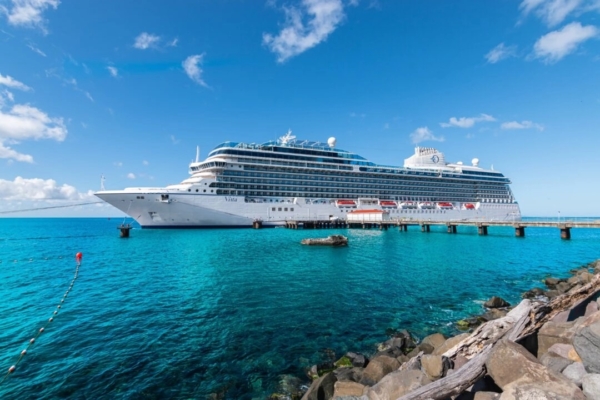After retiring, living on a cruise ship is a dream for many people. Some have already made cruise ships their permanent residence, with some being seasonal migrants, and others living on board year-round.
Living on a cruise ship post-retirement is much simpler as most of your needs are taken care of. You don’t have to worry about what to eat or when to eat because delicious meals are prepared for you on the ship. You no longer have to pay for utilities, car loans, or gas.
Another advantage is that you don’t need to book airline tickets or spend hours in queues waiting for flights to the next destination. Instead, you get taken to scenic destinations every week.
Before seriously considering living on a cruise ship after retirement, you need to know that there are different types of cruise ships. Some large cruise ships can accommodate up to 6,988 passengers, typically making round trips every three days, weekly, or every 10 days to the same destination, such as those cruising in the Caribbean. However, visiting the same places multiple times can become quite repetitive.
Another type of cruise ship may travel to ports worldwide, making multiple stops at various ports throughout the year. Smaller cruise ships might dock at different ports within the same country and generally accommodate around 2,100 to 3,000 passengers.
Smaller cruise ships can carry up to 800 people and are typically not in open seas but travel on lakes and rivers.
The smaller the cruise ship, the fewer facilities it may have, and they are usually booked by the hour or day.
Luxury cruise ships, such as “The World,” feature 165 private apartments available for purchase or rent. The residences on board range from single-bedroom apartments to three-bedroom units that can be customized.
According to the cruise ship specialist website CruiseHive, if your retirement plan includes living on “The World” or a similar luxury ship, you might expect to pay between $352,000 to $36 million, plus maintenance fees. The ship docks at more than a hundred ports every year, sailing across various oceans, with other cruise companies also preparing similar vessels.
Most cruise ships have limited space, so you can’t bring all your household items on board. If you plan to keep them, consider renting a small storage unit or maintaining a house ashore. Maintaining a house ashore entails paying for maintenance and property taxes, as well as having someone oversee it, but you can rent out the house to help cover those costs.
Different types of cruise ships vary significantly. Migration cruise ship voyages range from 58 days to 116 days, allowing you to book a long or short period on board based on your preference, with lower-cost options starting at $16,000, but many cruise packages may cost up to $250,000.
Additional fees may apply on cruise ships, including tips, onshore excursions, medical care, laundry, and dining options.
Depending on your lifestyle, you may end up spending more on gambling, beverage packages, and dining at specialty restaurants on board. Purchasing souvenirs at ports and dining at local restaurants also add to the expenses. Consumer website Cruzely.com estimates that retirees living on a cruise ship may spend an additional $21,000 annually on board (compared to on land) and an extra $16,000 at various ports.
The amount you spend depends on the type of lifestyle you desire. If you are conservative with extra expenses, you can enjoy life at sea at a lower cost and still have a great time. Interior cabins are usually priced lower.
Port stops offer an excellent way to see the world, but cruise itineraries may change at any time due to various reasons, potentially resulting in cancellations of destinations you wished to visit.
Cruise ships do not provide comprehensive medical care expertise and equipment, so if you have health issues or require specific medical care in the near future, cruising may not be suitable.
Medicare may not cover your medical needs while on a cruise ship. According to the regulations of Medicare Advantage plans (Red, White, and Blue card), Medicare will cover you if you have Parts A and B and are within the U.S. territorial waters or territories; however, standard Medicare usually does not apply, but Medicare Advantage plans (Part C) may cover specific health issues.
Additional costs for medical insurance are needed, and you can purchase travel medical insurance or overseas medical insurance plans.
Any type of vessel may encounter unexpected issues. The well-known media in the tourism sector, ThePointsGuy, mentioned that if issues arise on the ship, you may need to book a hotel, use transportation, and pay for meals. Be prepared with extra funds if necessary.
To determine if living on a ship long-term suits you, the only way is to spend time living on board. This will give you a clear understanding of the costs and help you decide if cruise ship living is for you. It is also important to try various cruise companies as you may develop a preference for one over another.
If you love adventure and visiting many unique new places, life on a cruise ship may be just what you need. You can meet many people, including some notable figures, and enjoy a plethora of facilities and entertainment on board, making it an endless pleasure. Before embarking on this lifestyle, it is advisable to communicate with your estate planner or travel agency.
The original content was published in English by The Epoch Times.
Copyright © 2024 The Epoch Times. All rights reserved. This article represents the views and opinions of the author for general informational purposes only, with no endorsement or solicitation intent. The Epoch Times does not provide advice on investments, taxes, legal matters, financial planning, estate planning, or real estate planning. The Epoch Times does not guarantee the accuracy or timeliness of the content.

